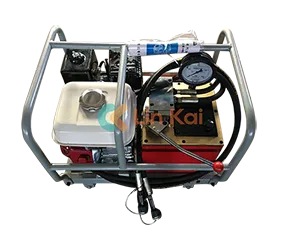
- English
- Español
- Português
- русский
- Français
- 日本語
- Deutsch
- tiếng Việt
- Italiano
- Nederlands
- ภาษาไทย
- Polski
- 한국어
- Svenska
- magyar
- Malay
- বাংলা ভাষার
- Dansk
- Suomi
- हिन्दी
- Pilipino
- Türkçe
- Gaeilge
- العربية
- Indonesia
- Norsk
- تمل
- český
- ελληνικά
- український
- Javanese
- فارسی
- தமிழ்
- తెలుగు
- नेपाली
- Burmese
- български
- ລາວ
- Latine
- Қазақша
- Euskal
- Azərbaycan
- Slovenský jazyk
- Македонски
- Lietuvos
- Eesti Keel
- Română
- Slovenski
- मराठी
- Srpski језик
What are the examples of hydraulic tools?
2024-09-20
Hydraulic tools are tools designed using the principles of hydraulic systems. They can convert hydraulic power into various mechanical movements, such as reciprocating linear motion, rotational motion, etc., to complete various work tasks. Examples of hydraulic tools include but are not limited to:
Hydraulic wrench: used to tighten or loosen bolts, with the function of adjusting the torque size to ensure that the tightening force of the bolts meets the requirements, and are widely used in mechanical manufacturing, aerospace, automobile maintenance and other fields.
Hydraulic jack: used to lift heavy objects, and is a common tool in vehicle maintenance.
Hydraulic bolt tensioner: used to install and remove bolts, suitable for occasions requiring high force operation.
Hydraulic flange separator: used to separate or connect flange connectors.
Hydraulic nut cutter: used to cut or break rusted or damaged nuts.
Hydraulic puller: used to remove and install bearings or other mechanical parts that require linear motion.
Hydraulic shears: used to shear metal or other hard materials.
Hydraulic hole opener: used to open holes in materials with higher hardness.
Hydraulic wire crimping pliers: used to crimp wires, suitable for electrical work.

These tools are usually powered by hydraulic pumps, and precise operation and control are achieved through components such as hydraulic cylinders and control valves. The advantages of hydraulic tools include high efficiency, convenience, and the ability to provide greater force, making them suitable for situations that require high-intensity physical operations.



